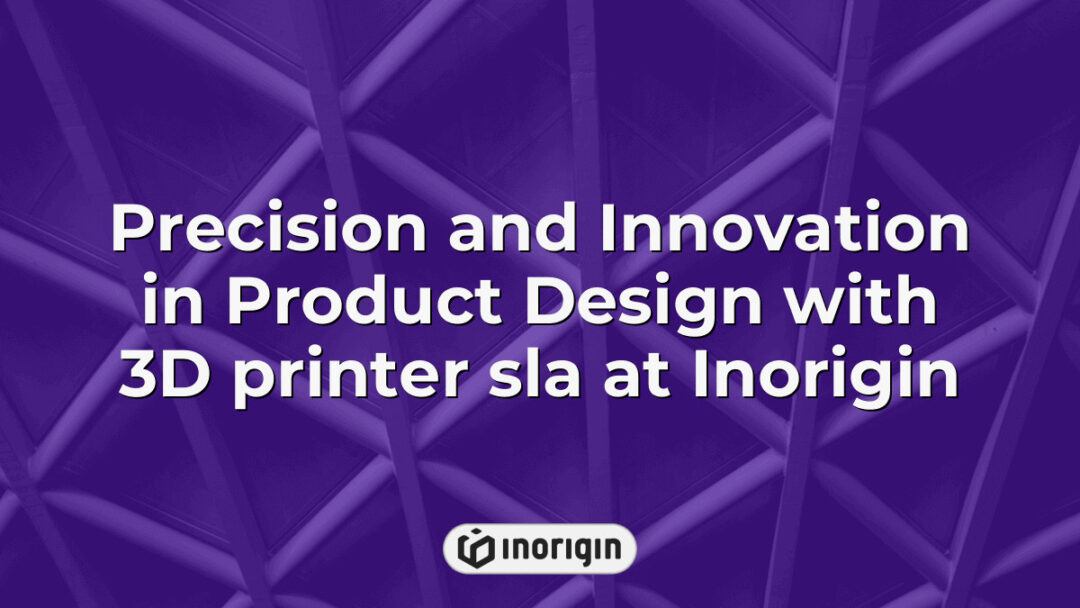In the ever-evolving landscape of additive manufacturing, the provision of complimentary 3D printer files presents an extraordinary gateway to innovation and creativity. These digital blueprints serve not only as a valuable resource for hobbyists and professionals alike, but also as a nurturing ground for collaboration and knowledge sharing within a vibrant global community. Accessing an array of free 3D printing files allows individuals to transcend the limitations of material constraints and explore a myriad of design possibilities, ultimately enriching the user experience and fostering experimental endeavors in this dynamic field. As the boundaries of what is achievable continue to expand, the allure of free 3D printer files stands as an invitation to embrace the transformative potential of technology and creativity.
| Aspect | Key Takeaway |
|---|---|
| Innovation with 3D printer free files | Access to 3D printer free files unlocks new creative and engineering opportunities in additive manufacturing, driving innovation for both hobbyists and professionals. |
| Trusted Community Platforms | Platforms such as Thingiverse and MyMiniFactory provide extensive libraries of user-shared 3D models, fostering collaboration and knowledge exchange. |
| Design Software Solutions | Software like Tinkercad, Blender, and Autodesk Fusion 360 empower users to customize and create precise 3D models tailored to project requirements. |
| File Selection and Compatibility | Choosing appropriate file formats and matching them to printer specifications, like build volume and nozzle size, ensures efficient and error-free prints. |
| Legal Use and Sharing | Understanding licensing agreements and copyright frameworks is essential to use and share 3D designs responsibly within the legal boundaries. |
| Effective Troubleshooting | Identifying common issues such as file corruption or slicing errors with community support and dedicated tools improves overall printing success. |
| Quality Verification | Reviewing user feedback, ratings, and previewing models via slicing software helps verify the reliability and printability of free 3D printer files before use. |
Exploring the Best Websites for Free 3D Printer Files
The exploration of websites offering free downloads for 3D printer files reveals a rich variety of resources, which, while seemingly limited by concerns over quality and copyright, actually provide substantial options for both hobbyists and professionals. Many may argue that free files lack reliability or may infringe upon intellectual property rights, yet numerous platforms have emerged that respectively cater to the diverse needs of the 3D printing community while emphasising open-source principles. For instance, sites like Thingiverse and MyMiniFactory not only host extensive libraries of user-uploaded models, but they also encourage the community to share and innovate, thereby expanding the repository of accessible designs. Furthermore, while the temptation of free files can lead to unintentional breaches of copyright, platforms often clarify usage rights, granting users a clearer understanding of how they might employ the models in their own projects. Such careful navigation of conditions allows creators to utilise these resources effectively while promoting responsible sharing practices. Ultimately, the ongoing evolution of these websites ensures a thriving ecosystem for free 3D printer files that caters to enthusiasts and firms alike, suggesting that even with potential drawbacks, the benefits of exploring these resources significantly outweigh the risks involved.
Top Software and Platforms for Designing Your Own 3D Models
In the ever-evolving landscape of technology, the ability to design custom 3D models stands as a tower of innovation for both amateur creators and seasoned professionals alike. This ability is significantly enhanced through the use of various software and platforms that facilitate the creation of designs tailored for 3D printing, thus shaping an accessible pathway for individuals to manifest their creative visions. Among the well-regarded applications is Tinkercad, a user-friendly platform that accommodates a broad audience, from beginners to those with a more advanced skill level; it allows easy manipulation of 3D shapes and elements to build unique models. Further along the spectrum of complexity, Blender offers robust capabilities for modelling with its extensive toolkit, catering to more experienced designers who seek flexibility and detail in their creations. Additionally, Autodesk Fusion 360 combines computer-aided design (CAD), computer-aided manufacturing (CAM), and cloud-based collaboration—an invaluable asset for teams working on comprehensive projects. Understanding the intricacies of these software tools, along with the accompanying platforms such as Thingiverse and MyMiniFactory, opens new frontiers for designers, allowing them to explore and share an array of 3D models, thereby enriching the community of 3D printing enthusiasts. The fusion of creativity and technology within these platforms not only democratizes the act of design but also cultivates an environment ripe for innovation and collaboration.
Tips for Choosing the Right Files for Your Printer and Project
Selecting the appropriate files for a 3D printer and project requires careful consideration of multiple factors. Initially, the idea is that all printable 3D models are universally compatible with every printer; however, this notion often proves false. Each printer has its own specifications, including build volume, nozzle size, and layer height, which dictate the type of files that can be effectively used. Consequently, when evaluating which files to choose, understanding the material compatibility is crucial; for instance, STL files are commonly used for straightforward models, but advanced printers may require the more complex OBJ or AMF formats. Additionally, one must consider the quality and resolution of the models being downloaded—higher resolution files generally yield better print results but may also demand longer print times and greater material consumption. Furthermore, examining user reviews and ratings of these files can provide insight into their reliability and efficacy, allowing for an informed decision. Ultimately, the selection process hinges upon aligning the file type with the printer’s capabilities and the specific requirements of the intended project. This approach ensures not only successful prints but also maximises the efficiency of the printing process.
Legal Considerations When Using and Sharing 3D Designs
"Every coin has two sides," and this adage rings particularly true within the context of 3D printing, especially regarding the legal considerations associated with using and sharing 3D designs. The technology, while revolutionary, carries a plethora of legal complexities that cannot be overlooked; from copyright laws to licensing agreements, these factors influence how designs can be utilised, replicated, or disseminated. For instance, many designers operate under the assumption that their creations are automatically protected by copyright, but this is not always the case. In practice, many designs may fall under open-source licenses, allowing for more freedom in sharing, provided certain stipulations are adhered to. Furthermore, the implications of intellectual property rights remain significant; it’s essential for users to understand where their downloaded files originate and what rights come with them. The dialogue surrounding legal frameworks must take into account the evolving landscape of 3D printing technologies and the necessity for clear guidelines that protect both creators and users. Therefore, diligent attention to legal aspects is crucial for anyone engaged in the 3D printing community, as overlooking these matters could lead to serious repercussions.
Troubleshooting Common Issues with Free 3D Printer Files
Troubleshooting common issues with free 3D printer files often presents considerable challenges that can deter effective use of this valuable resource. When dealing with such files, one frequently encounters problems ranging from file corruption to compatibility issues with specific printer models; these difficulties can arise for various reasons, including the software used for slicing and preparing files for printing. For instance, improper settings during the slicing process might lead to inadequate support structures, resulting in prints that fail or suffer from poor adhesion to the print bed. Additionally, issues such as missing or misplaced parts within a file can contribute to failed prints, necessitating a keen eye for detail when reviewing downloaded designs. While some may suggest relying on community forums and user feedback as methods for troubleshooting these common dilemmas, one should also consider the benefits of using dedicated troubleshooting software that can identify potential problems within the file. By engaging with both the community and the available technological tools, users can effectively address the challenges associated with free 3D printing, facilitating a more successful printing experience.
Frequently Asked Questions
What types of materials are best suited for 3D printing with free files?
When considering the types of materials best suited for 3D printing using free files, several key factors come into play. Firstly, thermoplastics like PLA (polylactic acid) and ABS (acrylonitrile butadiene styrene) dominate the landscape due to their widespread availability and user-friendly characteristics. PLA, known for its ease of printing and biodegradability, is ideal for beginners or projects requiring intricate designs. Conversely, ABS offers greater strength and heat resistance, making it suitable for functional prototypes; thus, the choice may depend on the intended application. In additional materials, TPU (thermoplastic polyurethane) presents itself as an excellent option for flexible prints, with its elastic properties allowing for a variety of applications ranging from phone cases to wearable devices. Furthermore, resins, particularly for SLA printing, enable high-resolution models; they provide unparalleled detail but often require post-processing to remove excess material, adding complexity to the workflow. The notion of metal filaments, while not as common, is emerging and caters to users seeking durability and authenticity in their projects, although considerations regarding printer compatibility and material costs must also be taken into account. Each material presents unique characteristics that either enhance or limit functionality, thus driving the selection process for 3D printing with free files.
How can I ensure the quality of free 3D printer files before downloading them?
Evaluating the quality of free 3D printer files prior to downloading is a crucial step in the 3D printing process. For instance, take the case of a designer who downloaded a file from an online repository, only to find upon printing that it produced a model with significant structural weaknesses. This not only wasted time but also material resources, leading to unnecessary costs. Therefore, assessing the reliability of the source becomes the first step; reputable platforms often have user reviews and ratings indicating the experiences of others with the file. Furthermore, checking the file format is essential, as certain formats may be incompatible with specific printers. It is also advisable to preview the model using slicing software, which allows users to visualise the printed output, highlighting potential issues such as non-manifold edges or overlapping geometries that could compromise print quality. By following these steps – scrutinising the source, assessing file formats, and using slicing previews – users can significantly mitigate the risks associated with downloading free 3D printer files and enhance the likelihood of successful prints.
Are there any community forums or groups where I can discuss 3D printing techniques and free design files?
Community forums and online groups serve as essential platforms for individuals seeking to discuss 3D printing techniques and the availability of free design files. These environments facilitate a rich exchange of knowledge, fostering collaboration among both novices and experienced practitioners in the field. A variety of websites, including Reddit, Thingiverse, and dedicated Facebook groups, provide spaces for myriad discussions, allowing participants to share insights, troubleshoot issues, and showcase their projects. Some of the key aspects contributing to the effectiveness of these forums include:
- Real-time feedback on 3D printing processes and challenges faced by users.
- Recommendations for high-quality free design files from trusted sources within the community.
- Tutorials and guides shared by members, covering topics from basic techniques to advanced printing methods.
- Opportunities for users to request specific designs, enhancing collective creativity and problem-solving.
- Networking possibilities with local makers and enthusiasts, which can lead to collaborative projects or meetups.
Engagement in these communities often leads to a deeper understanding of both the technical and artistic aspects of 3D printing. Active participation encourages the growth of skills, while the sharing of experiences contributes to a culture of support and continuous learning. The availability of diverse perspectives on common challenges can significantly improve the overall quality of projects and foster innovation within the 3D printing community.
Conclusion
In conclusion, the availability of free 3D printer files serves as a gateway to creativity and innovation, enabling individuals to transform ideas into tangible objects. Like seeds sown in fertile soil, these resources foster growth in the maker community, ultimately leading to a blossoming of unique designs and solutions.
Related posts:
- 3D printer files free and expert resources for flawless prototype production
- Unlimited Creativity with 3D Print Files Free From Leading Online Platforms
- Comprehensive Resources and Tips for Accessing Free 3D Printer Files
- Comprehensive Sources and Expert Tips for Free STL Files for 3D Printing
- Comprehensive Guide to Free STL Files for Professional 3D Printing Projects
- Essential Techniques to Source and Prepare Free 3D Print Files for Professional Results




